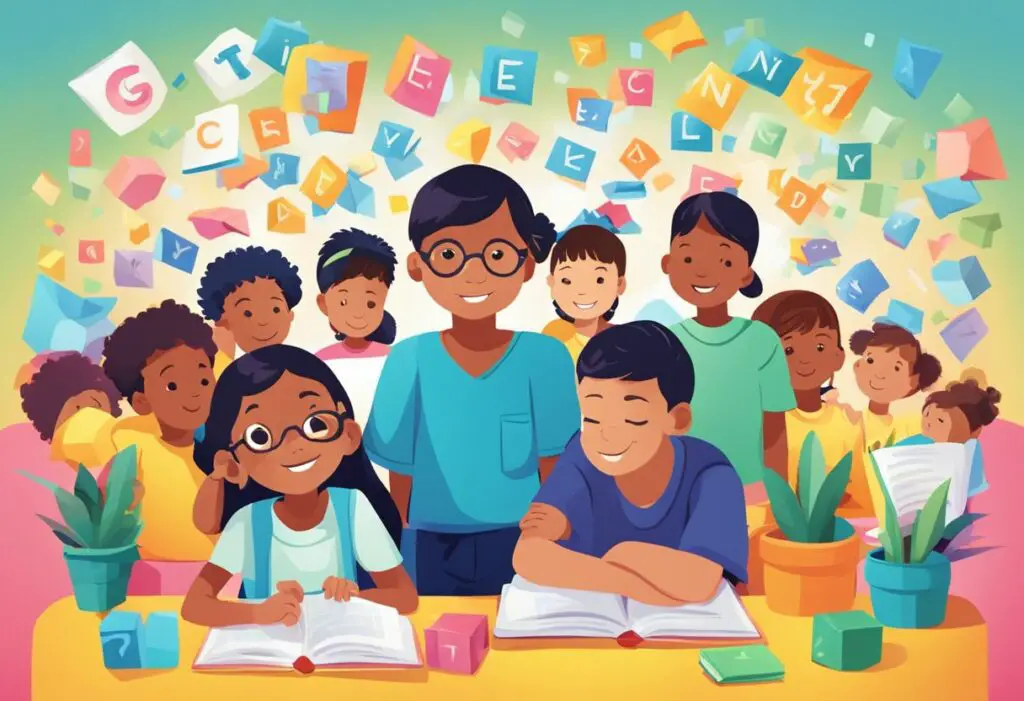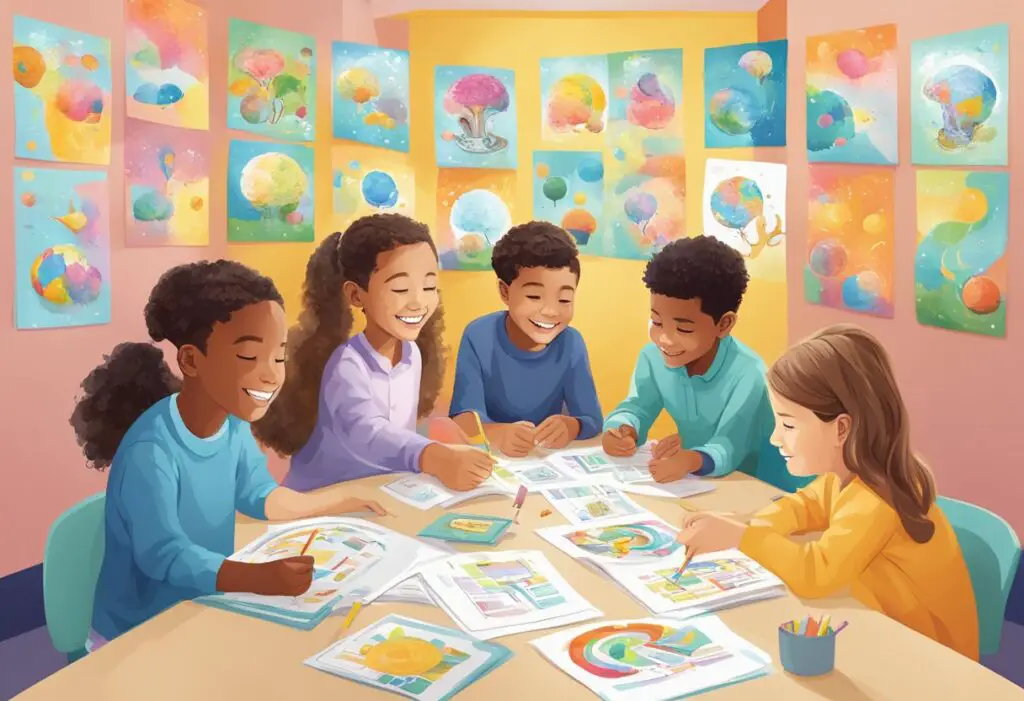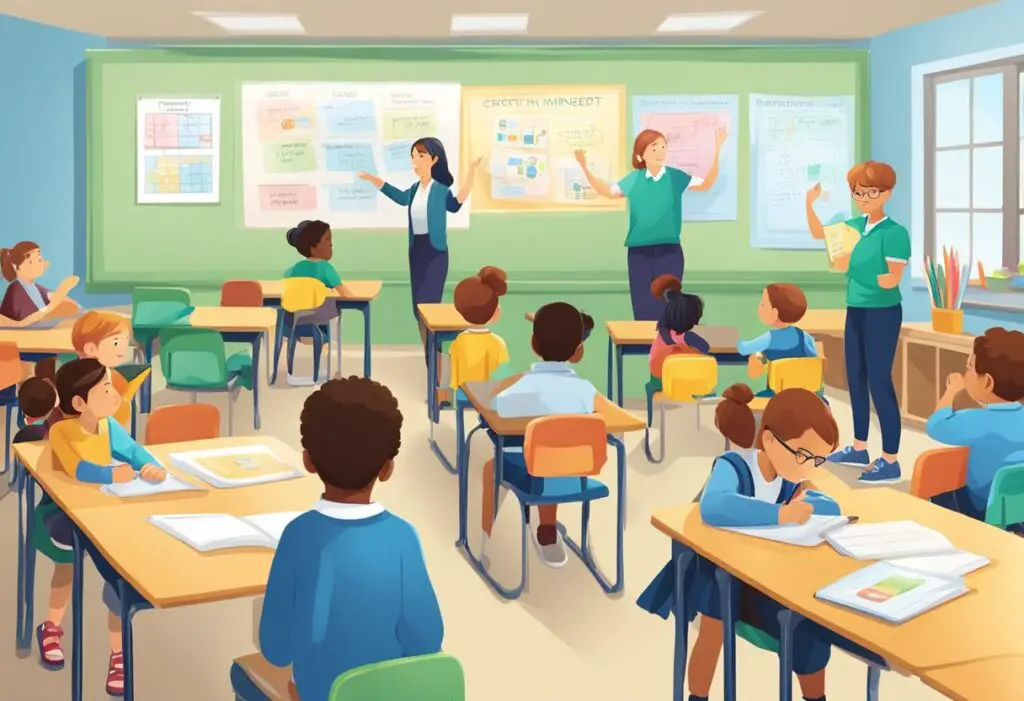So, you’ve heard about the growth mindset and how it can help kids succeed in learning. But what exactly is a growth mindset?
According to Carol Dweck, a psychologist at Stanford University, a growth mindset is the belief that your abilities can be developed through hard work and dedication. This is in contrast to a fixed mindset, where you believe your abilities are predetermined and cannot be changed.

But it’s not just about what you believe – it’s also about how you talk to your kids. Using growth mindset language can help them develop a growth mindset and become more resilient learners. This means using phrases like “I can’t do it yet” instead of “I can’t do it” and praising effort and progress instead of just natural ability. In this article, we’ll explore some of the best growth mindset language for kids and how you can incorporate it into your parenting or teaching.
The Great Brain Gymnastics

Are you ready to give your brain a workout? Just like you exercise your muscles to make them stronger, you can exercise your brain to become smarter. That’s right, your brain is like a muscle, and the more you use it, the stronger it gets. So, let’s get started with some great brain gymnastics!
The Power of Yet
Have you ever heard of the word “yet”? It’s a tiny word, but it has a lot of power. When you say, “I can’t do this,” it means you can’t do it right now. But when you add “yet” at the end, it changes everything. “I can’t do this yet” means you can’t do it right now, but you will be able to do it in the future.
Using the word “yet” is a great way to develop a growth mindset. A growth mindset means you believe that you can improve your intelligence and abilities with practice and hard work. So, the next time you feel like giving up, remember the power of yet. You might not be able to do it right now, but you will be able to do it with time and effort.
Muscle Up Your Mind
Just like you need to exercise your muscles to make them stronger, you need to exercise your brain to make it smarter. But how do you exercise your brain? Here are some great brain exercises you can try:
- Puzzles: Puzzles are a great way to exercise your brain. They challenge your problem-solving skills and help improve your memory.
- Reading: Reading is a great way to exercise your brain and improve your vocabulary. It also helps you learn new things and expand your knowledge.
- Learning a new skill: Learning a new skill, like playing an instrument or speaking a new language, is a great way to exercise your brain. It challenges your brain to learn new things and helps improve your memory and cognitive abilities.
Remember, the more you exercise your brain, the stronger it gets. So, make sure to give your brain a workout every day!
-

Bold Male Pride – Baseball Trucker Cap Celebrating Masculinity
£18.00 Select options This product has multiple variants. The options may be chosen on the product page -

Dad Bod Appreciation Gift Mug
£14.00 Add to cart -

Dad Bod, Bad Jokes Structured Baseball Cap
£22.00 Select options This product has multiple variants. The options may be chosen on the product page
In conclusion, exercising your brain is just as important as exercising your muscles. By using the power of yet and exercising your brain with puzzles, reading, and learning new skills, you can develop a growth mindset and become smarter over time. So, get started with some great brain gymnastics today!
Mistakes: The Secret Ingredients of Success
Mistakes are often viewed as something negative, something to avoid at all costs. But what if we told you that mistakes are actually the secret ingredients of success? Yes, you read that right. Mistakes are not something to be ashamed of but rather something to embrace.
Embracing the Oops Moments
When you make a mistake, it’s easy to get down on yourself and feel like a failure. But instead of beating yourself up, try embracing the “oops” moments. These moments are opportunities for growth and learning. When you make a mistake, you have the chance to learn from it and do better next time.
In fact, research shows that people who have a growth mindset are more likely to embrace their mistakes and learn from them. According to an article on positivepsychology.com, “Children who are taught to embrace their mistakes as opportunities for growth are more likely to persist in the face of challenges, take risks, and view effort as the key to success.”
The Art of Failing Forward
Have you ever heard of the phrase “failing forward”? It means that when you fail, you don’t give up. Instead, you use your failure as a stepping stone to success.
Thomas Edison, the inventor of the light bulb, once said, “I have not failed. I’ve just found 10,000 ways that won’t work.” Edison didn’t view his failures as setbacks but rather as opportunities to learn and grow.
So, the next time you make a mistake or experience a setback, remember that it’s not the end of the world. Embrace the “oops” moments and use them as opportunities for growth. And don’t forget to fail forward.
The Magic Words: Growth Mindset Language
As a parent or educator, you have the power to shape the way children view themselves and their abilities. The language you use can either reinforce a fixed mindset or encourage a growth mindset. Here are some tips on how to use growth mindset language to help children develop a positive attitude towards learning and growth.
Say It Like You Mean It
The words you use matter, but the way you say them matters just as much. When you praise a child, make sure it comes from a place of sincerity. Children can tell when you’re just going through the motions. Instead of using generic praise like “good job,” be specific about what you’re praising. For example, “I’m proud of you for working so hard on that project” or “You really put in a lot of effort and it paid off.”
The Vocabulary of Victors
The words you use can have a powerful impact on a child’s mindset. Avoid using negative language like “you can’t” or “you’re not good at.” Instead, use positive language that focuses on growth and improvement. Encourage children to use phrases like “I can’t do it yet, but I’m working on it” or “I’m not good at this, but I’m going to keep practicing until I get better.”
Here are some other growth mindset phrases to try:
- “Mistakes are opportunities to learn.”
- “I’m going to try a different strategy.”
- “I’m not giving up, even if it’s hard.”
- “I’m going to keep practicing until I get it.”
Remember, the words you use can have a big impact on a child’s self-talk. Encourage them to use positive self-talk and to be their own biggest cheerleader.
In conclusion, using growth mindset language is an important tool for helping children develop a positive attitude towards learning and growth. By using specific, sincere praise and positive language that focuses on growth and improvement, you can help children develop a growth mindset that will serve them well throughout their lives.
Parents: The Mindset Mold-makers
As a parent, you are the most important teacher your child will ever have. You have the power to shape their beliefs about themselves and their abilities. That’s why it’s crucial to understand the power of growth mindset language and how to use it to help your child thrive.
Home: The First Classroom
Did you know that your home is the first classroom your child will ever attend? That’s right! From the moment they are born, they are learning from you. Everything you say and do has an impact on their beliefs about themselves and their abilities.
So, how can you create a growth mindset environment at home? It’s simple! Start by praising your child’s effort, not just their abilities. For example, instead of saying, “You’re so smart!” say, “I’m proud of how hard you worked on that!” This helps your child understand that their effort is what leads to success, not just their innate abilities.
Modeling: Walk the Talk
As a parent, you are the ultimate role model for your child. They look up to you and learn from your actions. That’s why it’s important to walk the talk when it comes to growth mindset language.
For example, if you make a mistake, don’t be afraid to admit it and show your child how you’re going to learn from it. This helps your child understand that making mistakes is a natural part of the learning process.
Another way to model growth mindset language is to use positive self-talk. Instead of saying, “I can’t do this,” say, “I haven’t figured it out yet, but I will!” This helps your child understand that it’s okay to struggle and that they can always keep trying.
Remember, you are the mindset mold-maker for your child. By creating a growth mindset environment at home and modeling growth mindset language, you can help your child develop a positive mindset that will serve them well throughout their lives.
The Classroom Chronicles: Teachers and Growth Mindset

From Fixed to Growth: A Classroom Story
You walk into a classroom and hear a teacher say, “You’re so smart!” to a student who aced a test. Sounds like a compliment, right? But what if we told you that it’s actually a fixed mindset statement? According to APA, a fixed mindset is when a person believes their intelligence and abilities are set in stone and cannot be changed. This kind of thinking can lead to a fear of failure, a lack of resilience, and a reluctance to take on challenges.
Fortunately, many teachers are now shifting towards a growth mindset approach. A growth mindset is the belief that intelligence and abilities can be developed through hard work, dedication, and perseverance. This kind of thinking can lead to a love of learning, a willingness to take risks, and a desire to improve.
Strategies for a Growth Mindset Classroom
So, how can teachers foster a growth mindset in their classroom? Here are some strategies:
-
Use growth mindset language: Instead of saying, “You’re so smart!” say, “You worked hard, and it paid off!” or “I can see you’re improving!” This kind of language emphasizes effort and progress rather than fixed traits.
-
Encourage risk-taking: Create a safe and supportive environment where students feel comfortable taking risks and making mistakes. Encourage them to see mistakes as opportunities to learn and grow.
-
Teach the science of the brain: Teach students about the brain’s ability to grow and change. Explain that when they learn new things, their brains form new connections and get stronger.
-
Provide challenging work: Give students work that is challenging but achievable. This will help them develop a growth mindset by showing them that with effort and perseverance, they can overcome obstacles and achieve their goals.
-
Model a growth mindset: Finally, teachers should model a growth mindset themselves. Share stories about your own struggles and how you overcame them. Show students that you are always learning and growing and that mistakes are a natural part of the learning process.
By adopting a growth mindset approach in the classroom, teachers can help students develop a love of learning, a willingness to take risks, and a desire to improve. With these strategies, you can create a classroom culture that celebrates effort and progress rather than fixed traits.







